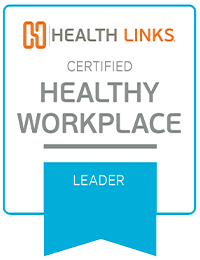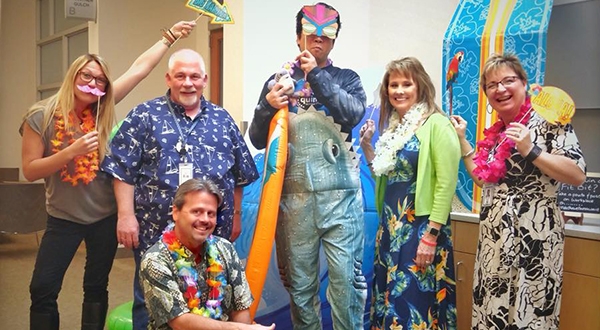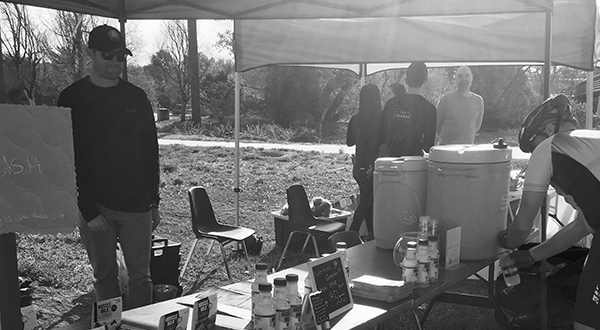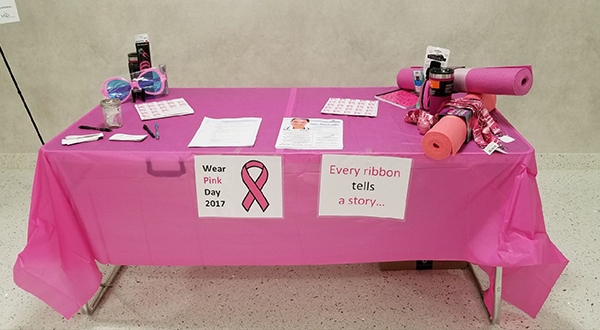
Health Links (HL): What does being a healthy business mean to your organization? How does it reflect the company's values and business goals?
Adams County (AC): At Adams County, the Journey to Wellness Program falls under the umbrella of People and Cultural Services. The purpose of People and Cultural Services is "to cultivate the success of Team Adams" and the goal of this sector is to be "a place where everyone shines."
Being a healthy business is essential to the success of our organization. With a goal of "a place where everyone shines," Adams County shows its commitment to helping employees be all they can be inside and outside of work. The baseline for success is being healthy enough to succeed. Healthy and happy employees mean more productivity and less turnover, which in turn builds a better "Team Adams." The Journey to Wellness program is very fortunate in the amount of funding that is awarded to it and the level of support it gets from upper management. Without this, we would not be able to offer all the programs we do and get the engagement that we see. Being a healthy business means we will be a successful organization and will better serve our community.
HL: How has Health Links helped your organization build a culture of health and safety?
AC: This is the first time we have worked with Health Links. The Journey to Wellness Program is excited about the opportunity to learn and improve our program via the resources that Health Links has to offer.
HL: What changes have you seen among your employees, their families, and the surrounding community as a result of your program(s)?
AC: Adams County has two onsite health clinics. It is through these clinics that we conduct our annual biometric screenings. In 2017, 77% of our population maintained or improved their health conditions. In wellness, it is considered a success to maintain health. When employees maintain their health, it is not putting them at increased risk. What is even more impressive is that 37% of the 77% actually decreased their health risk, which is an even bigger success. We believe that a major driver in this is the Journey to Wellness program and the health services we offer to our employees.
Another service that we offer to our employees is compliant health coaching. In 2017, employees who participated in this program lost 488 pounds. Not only does health coaching change the lives of our employees, it can be a positive influence on the employees' families as well. One individual who partook in this program over the last year reported that changing their child's diet has lead to improvements in behavior. This individual has also helped drive healthier snacks and meals that are offered at their child's daycare.
HL: Does your health and safety program give back to your community? If yes, how?
AC: Our safety program gives back to the community in several ways. Since many of our employees are heavily involved in traveling throughout the community, established expectations and training with regard to safe driving practices, distracted driving, and similar topics ensure employees will contribute to safety on the roads. As many employees drive marked county vehicles, they can consistently model safe behavior in a visible manner and encourage appropriate and courteous driving practices.
Additionally, a great many of the safety principles that apply while working apply equally to off-the-job activities. When employees are "off the clock," they can bring a safety mindset and important safety knowledge to family activities, community events, recreational pursuits, and everyday life to make the community safer as a whole.
Specific training that the county offers, such as emergency preparedness and CPR/AED, can be used in helping the community be better prepared to respond effectively in times of crisis or potential disasters.
Last year, the Journey to Wellness Program had a booth for Bike to Work Day. This community-facing booth provided participants with free "better for you" snacks and drinks. In addition, the booth had tips about how to pick out a healthy snack, an opportunity for community members to do a weight, body fat, and muscle analysis, and an option to get free advice from a registered dietitian.
Every July, the Journey to Wellness Program puts on an event called Family Fit Day. This event is for Adams County employees, their family and friends, and the community. Employees are encouraged to bring as many people as they like. During this event, participants can try fitness demos of Zumba, yoga, and boot camp, and engage in the mini family-friendly health fair and enjoy the complimentary "better for you" meal and snack options.
Adams County also encourages employees to volunteer in the community. All employees are given ten hours of paid volunteer time a year. In 2019, the Journey to Wellness Program will be awarding Wellness Points to all employees who participate in this program.
The most recent thing that the Journey to Wellness Program has done for the community is launch the first video in a series of public services announcements about health. See the video here.
HL: What tip/advice would you give to a business that is considering starting a workplace health and safety program?
AC: Take advantage of the many resources that are available to help businesses get started and improve their safety program. For example, many business associations, insurance companies, government agencies, and similar organizations provide free guidance, written materials, training, and other valuable resources that can be used in the development of a robust safety program.
Start small, but dream big.



